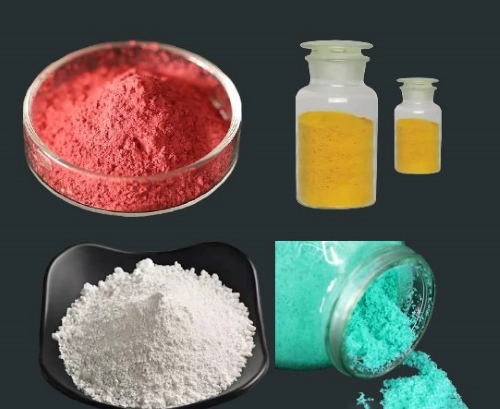Chlorides In Catalysis: An Overview
Introduction
Catalysis plays a central role in modern chemistry and industry, enabling chemical transformations with high conversion rates. Chloride compounds serve as catalysts in numerous processes. Documented studies report conversion rates exceeding 90% in specific cases. This article details the role of chloride compounds in catalysis. We present information on their applications, advantages, and operational challenges.

Main Types of Chloride Catalysts
1. Aluminium Chloride (AlCl₃)
Aluminium Chloride is a strong Lewis acid widely used in catalysis. It is employed in Friedel–Crafts reactions to catalyse alkylation and acylation of aromatic compounds. In practise, this reaction facilitates the synthesis of fine chemicals, pharmaceuticals and polymers. It is also utilised in the isomerisation and polymerisation of hydrocarbons in the petrochemical sector.
2. Cobalt Chloride (CoCl₂)
Cobalt Chloride is applied as a catalyst in several important processes. It is used in hydroformylation, where alkenes are converted to aldehydes that serve as precursors for alcohols, acids and other chemicals. Furthermore, in the Fischer–Tropsch process, CoCl₂ catalyses the conversion of synthesis gas (a mixture of hydrogen and carbon monoxide) into hydrocarbons, thereby achieving the specified product concentrations.
3. Iron Chlorides (FeCl₂ and FeCl₃)
Iron Chlorides are used in both industrial and environmental contexts. They are commonly employed in water treatment as coagulants to remove impurities, meeting regulatory standards. In organic synthesis, these compounds serve as catalysts for reactions such as chlorination and oxidation, yielding products with controlled selectivity.
4. Copper Chlorides (CuCl and CuCl₂)
Copper Chlorides are vital in the oxychlorination process for the manufacture of vinyl chloride, the monomer for PVC. Additionally, they participate in redox reactions in organic and inorganic synthesis to produce a range of chemical compounds under defined operating conditions.
Mechanisms and Functionality
The catalytic activity of chlorides is based on several key mechanisms:
- Lewis Acid Activity: Many chloride catalysts, such as Aluminium Chloride, act as Lewis acids. They accept electron pairs from reactants and facilitate the formation of new bonds, thereby increasing substrate reactivity.
- Redox Activity: Transition metal chlorides, including Cobalt and Iron Chlorides, participate in redox reactions. They alternate between oxidation states, thereby driving chemical transformations via electron transfer.
- Coordination Complex Formation: Metal chlorides form coordination complexes with organic molecules. These complexes stabilise reaction intermediates and increase reaction rates and selectivity.
Applications of Chlorides
1. Petrochemical Industry
Chloride catalysts are used in the petrochemical sector. They are deployed in refining processes to enhance fuel quality and yield. For example, Aluminium Chloride catalyses the alkylation of hydrocarbons to produce petrol with a high octane rating.
2. Polymer Production
Copper Chloride is crucial to the production of PVC. The oxychlorination process, catalysed by CuCl₂, converts ethylene into vinyl chloride monomers, which then polymerise to form PVC.
3. Pharmaceutical and Fine Chemicals
Chloride catalysts enable the synthesis of complex molecules in the pharmaceutical and fine chemicals industries. Their use has resulted in measurable increases in product yields for active ingredients and specialty chemicals.
4. Environmental Applications
Iron Chlorides are frequently used in water treatment. They act as coagulants to remove contaminants, thereby meeting established water quality standards. In addition, they are applied in waste treatment to precipitate heavy metals and other pollutants as specified by environmental guidelines.
5. Renewable Energy
Cobalt Chloride is employed in the Fischer–Tropsch synthesis to convert synthesis gas into synthetic fuels. This process contributes to the development of alternative energy sources through quantifiable product yields.
Advantages of Chloride Catalysts
Chloride catalysts offer measurable advantages in various chemical reactions and industrial processes. They demonstrate high catalytic turnover numbers as evidenced by conversion rates up to 90% under optimised conditions. Their applicability across reaction types—such as alkylation, acylation, hydroformylation and polymerisation—has been well documented. Moreover, the wide availability of many chloride compounds makes them economically viable for large-scale applications. For instance, the use of Iron Chloride in water treatment and Aluminium Chloride in organic synthesis contributes to maintaining defined process costs.
Environmental and Safety Considerations
The use of chloride catalysts necessitates adherence to strict environmental and safety protocols. Aluminium Chloride is corrosive and may cause severe burns; consequently, proper protective equipment and controlled handling procedures are mandatory. Cobalt Chloride poses toxicological risks and requires usage in well-ventilated environments. Furthermore, disposal of chloride catalysts must comply with environmental regulations to prevent contamination.
Future Directions
Research is ongoing to develop new chloride catalysts with improved performance and lower environmental impact. Investigations into supported and nanostructured chloride catalysts aim to enhance catalytic activity and reaction selectivity. These studies follow green chemistry principles and sustainable practices, thereby reducing the environmental footprint of catalytic processes.
Conclusion
Chlorides play a significant role in catalysis by supporting industrial processes and enabling the production of a wide range of chemical compounds. Their application requires careful attention to safety, handling and environmental protocols. Ongoing advances in catalyst design are expected to further improve the performance of chloride catalysts, thereby supporting efficient and sustainable chemical processes. For further details, please visit Stanford Advanced Materials (SAM).

 Bars
Bars
 Beads & Spheres
Beads & Spheres
 Bolts & Nuts
Bolts & Nuts
 Crucibles
Crucibles
 Discs
Discs
 Fibers & Fabrics
Fibers & Fabrics
 Films
Films
 Flake
Flake
 Foams
Foams
 Foil
Foil
 Granules
Granules
 Honeycombs
Honeycombs
 Ink
Ink
 Laminate
Laminate
 Lumps
Lumps
 Meshes
Meshes
 Metallised Film
Metallised Film
 Plate
Plate
 Powders
Powders
 Rod
Rod
 Sheets
Sheets
 Single Crystals
Single Crystals
 Sputtering Target
Sputtering Target
 Tubes
Tubes
 Washer
Washer
 Wires
Wires
 Converters & Calculators
Converters & Calculators
 Chin Trento
Chin Trento


